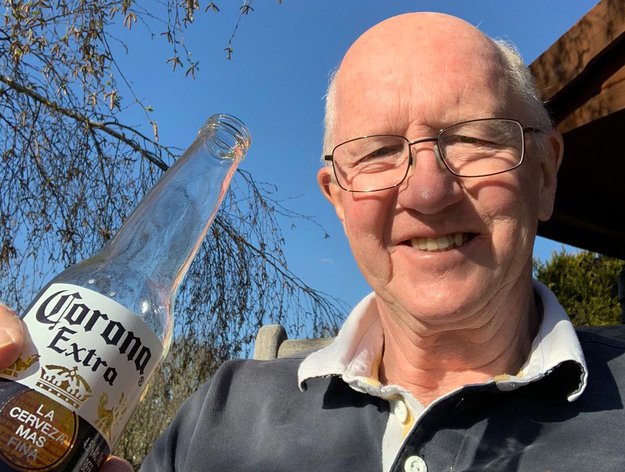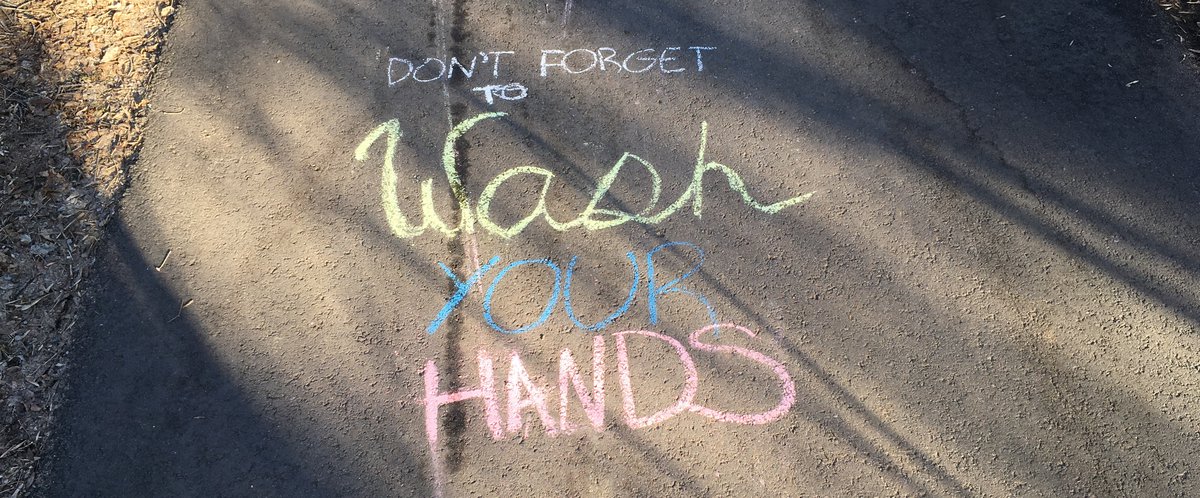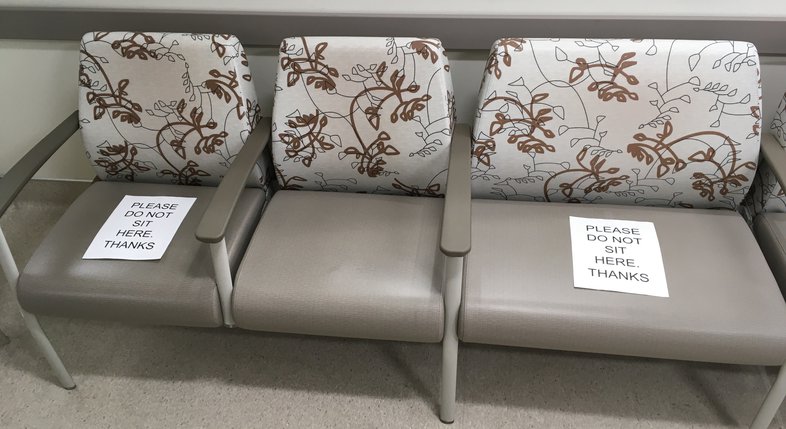“And I looked, and beheld a pale horse: and his name that sat on him was Death, and Hell followed with him. And power was given unto them over the fourth part of the earth, to kill with sword, and with hunger, and with death, and with the beasts of the earth.”
Revelation 6: verse 8.
John of Patmos did not specify which horse brought pestilence – Christians tend to think it was the fourth, the pale horse, but Jews suspect the first horse – the white horse. I prefer the sickly pale nag of death and pestilence. And involving the “beasts of the earth” fits with coronavirus being propelled on a water droplet from a screeching live bat grabbed from its cage and chopped up by a Wuhan wet market butcher for tasty amuse-gueules. This has to stop.
One of these darned horsemen (plague) always shows up at inconvenient times changing prevailing priorities. In January of this year, we were hand-wringing about climate change (which doesn’t have a horseman yet), how it was the greatest threat to life on earth, and that the world as we know it could end in 10 to 12 years; Indigenous and environmental hyper-activists were holding up freight trains across the country.
Then along came SARS-CoV-2 (the preferred name by the International Committee on Taxonomy of Viruses) and kissing cousin to SARS-CoV-1. This virus causes the disease COVID-19, the name preferred by the World Health Organization, so as not to offend China.
In February, media blather changed: the Chinese Communist Party had suppressed news of a severe respiratory illness in Wuhan, then closed down public gatherings, limited travel, and built flimsy hospitals in two days to cope with the vast numbers of sick. Trudeau was in Africa at the time promising my tax money to various dictators to support a two-year seat on the UN Security Council. Cruise ships were quarantined in Japanese waters. By February’s end, SARS-CoV-2 had appeared in Iran, Italy and South Korea. By March it was in North America, Europe and UK.
Tae a virus
Twa months ago, we didna ken,
yer name or ocht aboot ye
But lots of things have changed since then,
I really must salute ye
Yer spreading rate is quite intense,
yer feeding like a gannet
Disruption caused, is so immense,
ye’ve shaken oor wee planet.
Corona used tae be a beer,
they garnished it wae limes
But noo it’s filled us awe wi’ fear
These days, are scary times.
Nae shakin’ hawns, or peckin’ lips,
it’s whit they awe advise
But scrub them weel, richt tae the tips,
that’s how we’ll awe survive
Just stay inside, the hoose, ye bide
Nae sneakin’ oot for strolls
Just check the lavvy every hour
And stock-take your loo rolls
Willie Sinclair, after Burns “To a Mouse.”

Vacations cancelled, Canadian travellers returned, worried about not getting an ICU bed with a ventilator. And only a trickle of words about climate change being the biggest threat to humanity; nary a word about train blockades.
An economics editor of Sky News, Ed Conway, looking for a job in the United Nations with Mark Carney, exulted that COVID-19 was killing off the older generation who generally were slow to respond to the climate “emergency.”
This from the Sunday Times, formerly a reliably edited paper:
“Don’t take this the wrong way but if you were a young, hardline environmentalist looking for the ultimate weapon against climate change, you could hardly design anything better than coronavirus … Unlike most other such diseases, it kills mostly the old who, let’s face it, are more likely to be climate skeptics. It spares the young. Most of all, it stymies the forces that have been generating greenhouse gases for decades.”
I don’t know what the right way to take that is, Ed, but Rex Murphy in the National Post skewered you as a climate fanatic. I prefer calling you a pommy prick.
It wasn’t just a problem for the frail elderly – the young could succumb. People with no statistical knowledge talked about “flattening the curve.” The media’s role was, as usual, to sell stories, churning out half-baked opinion pieces tagged with minimally understood statistics (e.g., mortality rates). By March’s end, public reaction varied from near hysteria to laid-back complacency. A dearth of reliable statistics made determining whether shutting down whole economies was justifiable or whether the Swedes less martial approach was correct. Reliable data was required, not sensational news clips.
It took weeks for the penny to drop that age-adjusted mortality rates depend on accurate numbers of those infected and dying with COVID-19 and an accurate denominator of those with positive, reliable tests and an illness with no, mild or moderate symptoms. Kind of basic isn’t it? This message never came from the WHO.
The WHO has not excelled itself. Waiting till most countries came through with plans before advising anything, the announcement that we had a pandemic came as a yawn after so many countries had been infected. The most recent director, an Ethiopian, Dr. Tadros Ghebreyesus – the one who appointed the gentle, caring Zimbabwe’s Robert Mugabe as a WHO goodwill ambassador, but being roundly criticized, backed off this crazy scheme. Who knows what Mugabe might have achieved in this pandemic? The WHO needs to give specific advice like the importance of lab testing, which tests should be done and when, what stats to collect and to act as a repository of these stats.

And here, formerly unknown public health doctors, more used to sitting in offices, came to the fore to give a daily score of the cases and deaths and to implore the populace to wash their hands and keep a distance from other people.
Talk of “social distancing” and hand washing abounded and yet, in New York City and London England, the subway systems, trains and buses continued operating. “Health care workers need to get to their jobs and anyway the number of trains has been reduced” was the logic – but this merely squeezed more passengers into fewer trains. Canada belatedly announced March 28 that passengers with symptoms would not be allowed to travel on public transport. No one said how this would be policed – a physical examination before boarding?
Meanwhile, some tried putting the disease into context. For example, we had 657 deaths mainly among young people in Alberta in 2018 from opioid and street fentanyl poisoning. There are 257,000 deaths from all causes each year in Canada, which in Alberta works out to roughly 50-60 per day – mainly the elderly.
“This is different, dad,” said my daughter, a dentist in London, Ontario, adding that a 30-something grocery clerk had just died of COVID-19 while going about his business. She’s right, but we don’t know how many of these deaths would have occurred anyway, either from something not mentioned due to privacy or from a condition not yet diagnosed.
Meanwhile, stock markets tanked as did sales of Corona beer. I felt shocked fascination watching the markets on my iPhone. “Wow CIBC is at $52 with a 7.2% dividend,” I announced to colleagues. “There’s no way they’ll go bankrupt.” I bought and watched the price demonstrate a dead cat bounce. But it was a sensible buy if you take a three to four year outlook … unless we’re on a path like the Japanese stock market which hasn’t recovered from the plunge in 1989. But hey, that’s because they over-stimulated the economy in the 90s and now at 250% have the highest debt to GDP ratio in the G7 and the populace is into unenlightened thrift and saving, Couldn’t happen here, could it, because Mr. Morneau says our economy is fiscally solid with only a moderate national gross (federal plus provincial) debt to GDP ratio of 89.7% in 2018. So we can borrow, no problem.
Restaurants, bars and clubs closed, putting those in the service industry out of work. Then followed sports amenities. I’d been enjoying spring in Nanaimo where in mid-March the daffodils were blooming and played golf on a lovely afternoon with an old friend, Alan. The pro shop was closed but you could book a round at the Nanaimo golf club, the only rejoinder was: “golfers should not use the bunker rakes due to possible contamination.” Ha-ha we cried … we can manage without rakes. But the next day the club closed the course, never mind the subways still running in New York City.
Regimes differed in different countries. Sweden closed down very little: schools remained open, as were restaurants and bars. South Korea, Singapore and Taiwan took an early “test everybody” approach identifying those requiring isolation and reducing spread in the epidemic’s early phase.
In Canada we’ve had the daily Trudeau morning show where the prime minister’s drama training has finally paid off. We were slow imposing restrictions on travel. Ottawa snickered when Trump imposed a travel ban on airlines flying from COVID-19 hotspots before imposing that ourselves. And our too late banning of travellers with symptoms from using public transport (with no plan for monitoring) while everyone keeps six to eight feet from each other, is inconsistent.
Our AHS medical officers of health have done a good job with statements of daily facts, practical advice and efforts on containing hot spots like seniors’ residencies.
Not so, the ministry of health, I fear.
“Come down and sit in the dust, O virgin daughter of Babylon … therefore evil shall come of thee…and desolation shall come upon thee suddenly…” Isaiah 47: verses 1 and 11.

Our ministry’s effort at support? Umm…Babylon Health. Our family doctors were again annoyed by the announcement (again, no consultation) of a juicy contract between TELUS and Alberta Health with Babylon Health a notorious virtual consultation company that has caused problems for the UK’s National Health Service with a few minor advantages.
Founded by Ali Parsa, an Iranian and former Goldman Sachs banker, Babylon Health is backed by Saudi Arabia’s sovereign wealth fund. That Alberta should be contributing to this fund should make us all proud given the help and support from the nice Saudis over the years.
A general practice in London was bought in 2016 by Babylon and advertised itself as a virtual general practice – “GP at hand” – promising immediate access to a doctor. Affluent yuppies in London, cell phones in hand, flocked to the practice seduced by the ease of access and an over-hyped artificial intelligence system. The practice now has over 40,000 “patients” – the young, affluent “worried well.” For the privilege of immediate access, new recruits pay 150 quid annually or 49 quid per “consult.”
General practices in the UK receive an annual fee for each registered patient, the problem being that these new Babylon patients are all young and well. 94% of GP in Hand’s new patients are under 45. They use the ER more than average for their age group. Speed of access to a GP is the main reason for their using Babylon. These people have been skimmed from other practices which loses patient funding and end up looking after much more complex patients. This is cherry-picking and unfair. The Hammersmith and Fulham Commissioning Group found itself paying for a substantial part of London’s family practice bills.
This patient sub-group has been satisfied with the convenience and happy with the advice given, though less so when a face-to-face appointment is required. They have chosen temporary access over continuity of care. Those with more complex conditions tend to be less satisfied. The model may suit patients with mental health conditions, at least for mild anxiety/depression.
The doctors working in these virtual clinics tend to be younger, working one to two days per week, looking for a life/work balance. They dislike the longer hours and increasing workload of a traditional practice, though most continue to work in traditional GP practices as well. Young mothers like this option.
Look, we already have Alberta Health Link which dispenses advice often wisely telling sick patients to go to an emergency room or see their own family doctor. People with minor problems are given appropriate advice – but does it reduce crowding in ERs? Not really.
I have no hang-ups about privately paid-for medical care, including this virtual approach, but it seems to me unjustifiable for Alberta Health to be paying for these consults for this select group with my taxes. It’s introducing more care inequality in a system where enough already exists. Anyone using Babylon should pay out of their own pocket, particularly at a time when public service cut backs are going ahead. Babylon sifts off the healthy worried well and our family docs are left with more complex chronic care patients – oh, and by the way, the complexity modifier billing code is under reassessment – great management, Alberta Health.
A $38 per consult paid by Alberta Health is pretty amateurish at a time of medical cutbacks – although the silly mistake of paying family doctors $24 for a better “virtual” service was rectified. It’s one thing to allow access to a for-profit company offering private on-line consultations paid out of pocket by individuals wanting to waste their money, but it’s another to add on a service already covered by family doctors who have the actual files and knowledge of their patients. This service replicates the help-line that contributed little to de-congesting emergency rooms.
Babylon Health contributes little to fight the fourth horseman or to improve our health care. A Canadian company could develop a better virtual program, taking account of unmet privacy needs and the nuances of our health system, without sending money overseas.
Editor’s note: The views, perspectives and opinions in this article are solely the author’s and do not necessarily represent those of the AMA.
Reference: Evaluation of Babylon GP at hand. Final report by Ipsos MORI and York Health Economics Consortium for NHS Hammersmith and Fulham CCG and NHS England (2019.)
Banner image credit: Jeroným Pelikovský, Pixabay.com
